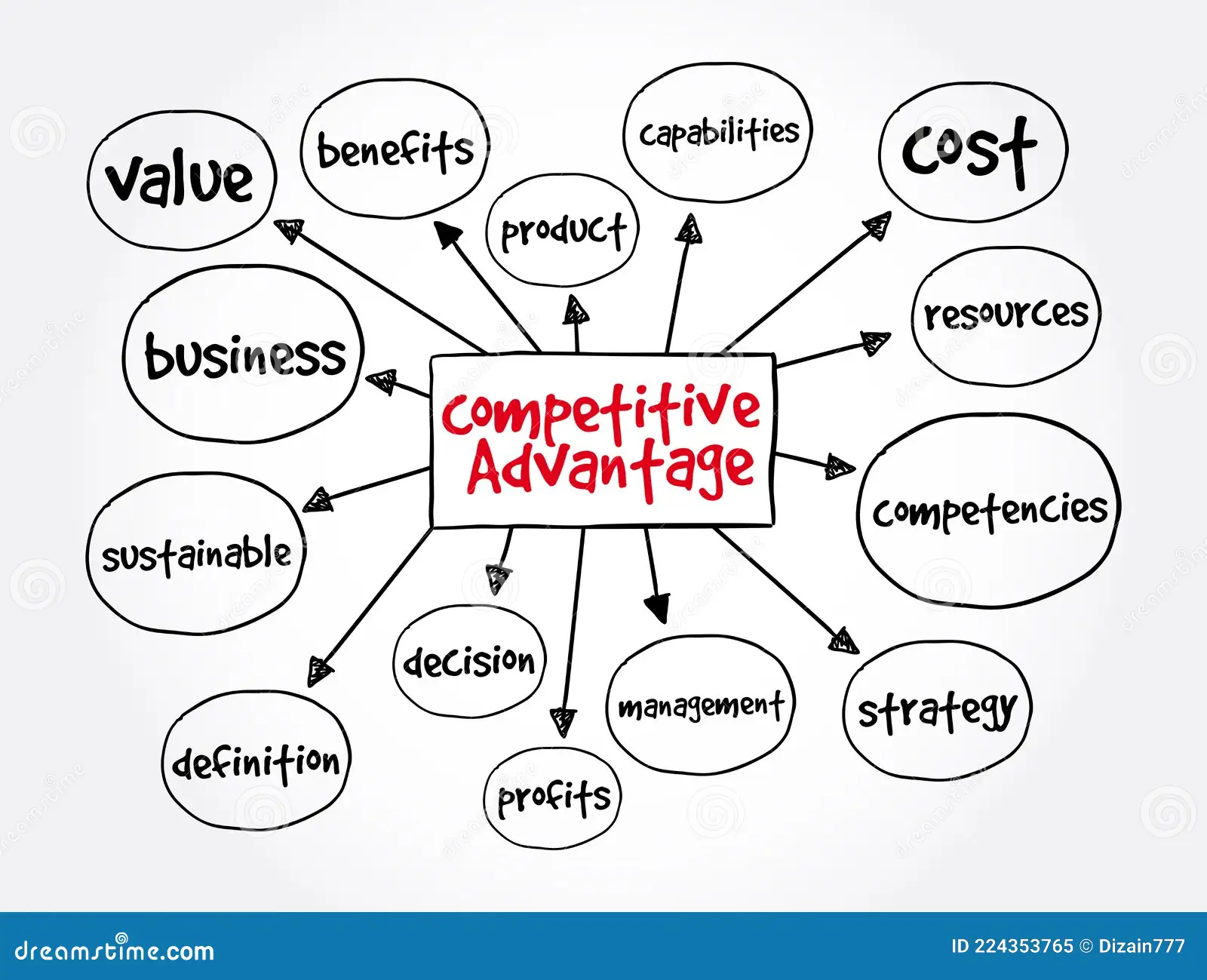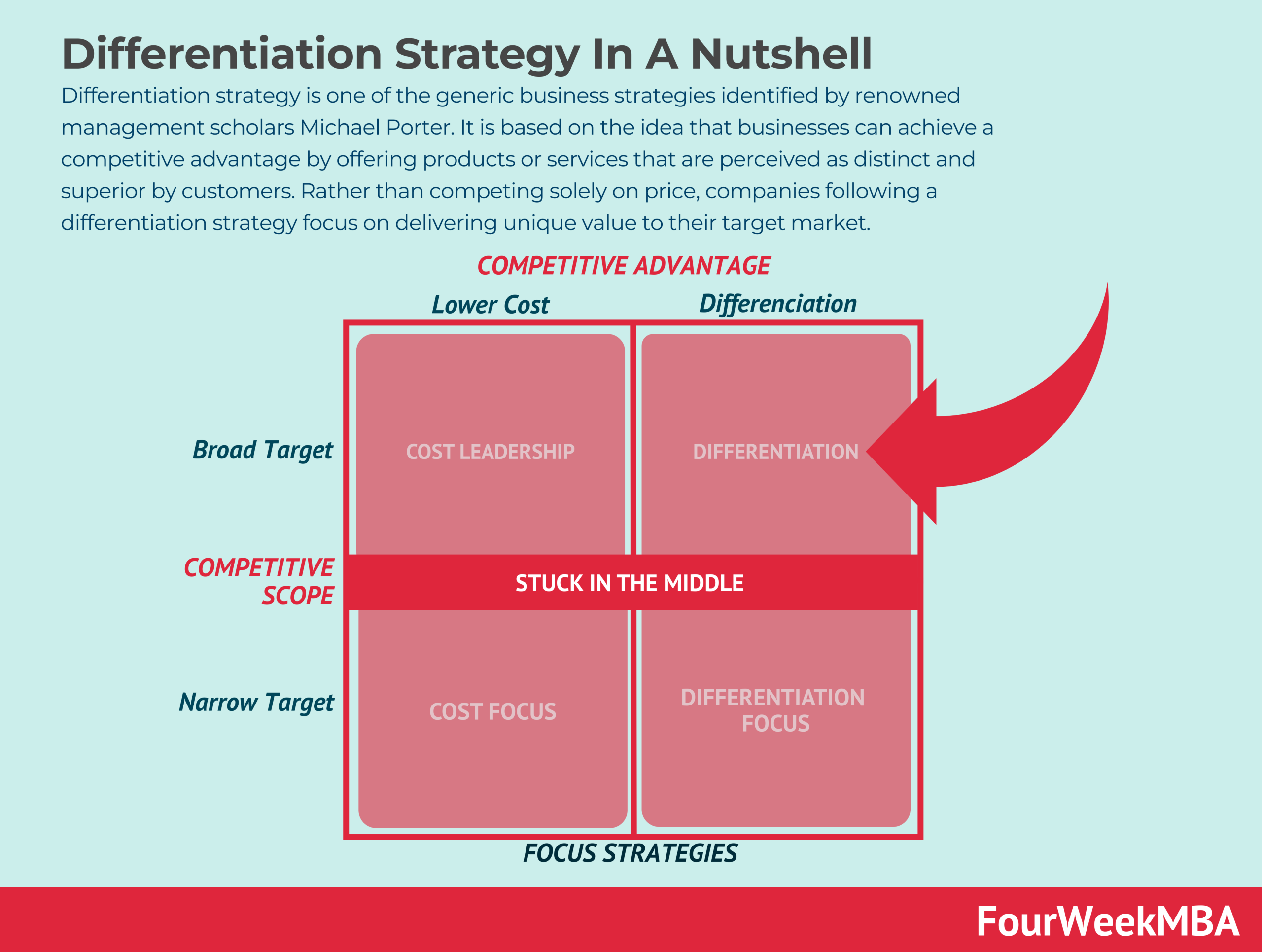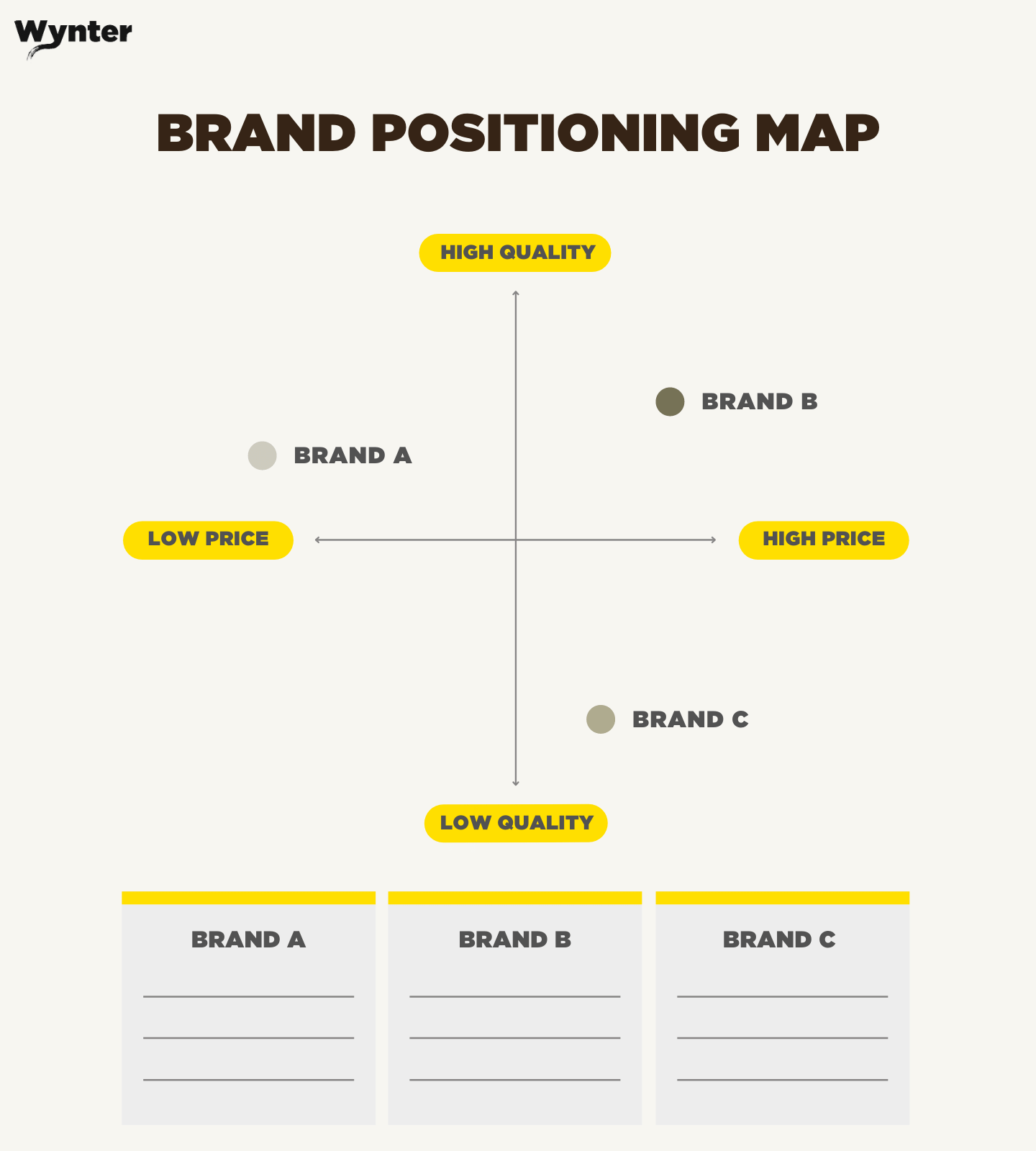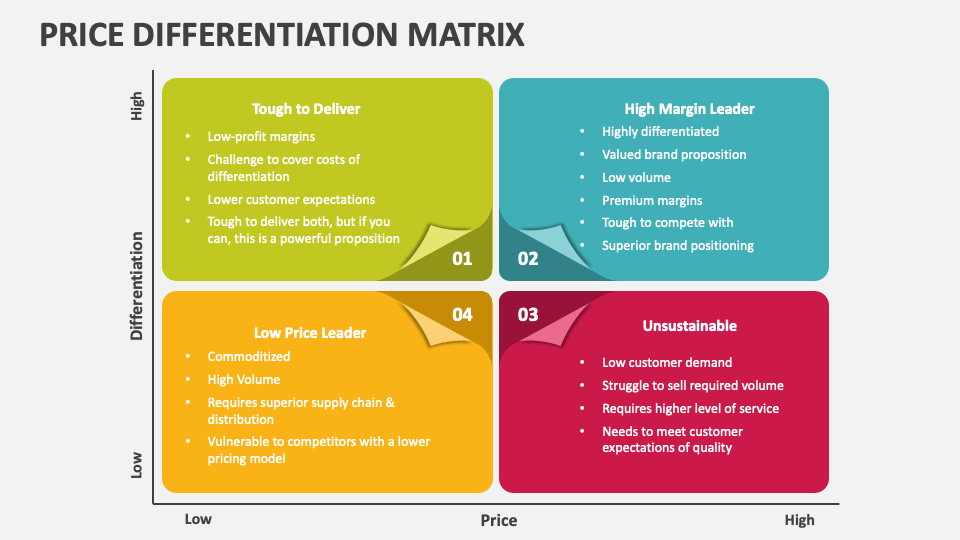Standing out in today’s competitive B2B market requires more than just offering a great product or service. The real challenge lies in differentiating your offerings in a way that resonates with your target audience and outshines your competitors. This guide will walk you through the critical steps of developing and implementing service differentiators that not only set your business apart but also drive customer satisfaction and loyalty.
From understanding the market landscape to identifying and leveraging your company’s unique strengths, this guide breaks down the process into actionable steps. Whether you’re struggling to create a compelling value proposition or looking to refine your existing strategies, you’ll find practical advice to elevate your approach. By the end, you’ll be equipped with the knowledge and tools to craft service differentiators that deliver real impact.
- Identify Your Unique Strengths: Start by evaluating what sets your business apart from competitors. Focus on leveraging these strengths to create service differentiators that resonate with your target market.
- Analyse the Competitive Landscape: Conduct thorough research on your competitors to identify gaps in their offerings. Use this insight to develop differentiators that fill these gaps and meet customer needs.
- Develop Tailored Differentiators: Create service differentiators that align with your company’s strengths and address the specific pain points of your target audience.
- Integrate Differentiators Across Your Operations: Ensure that your service differentiators are consistently implemented across all customer-facing operations to maximise their impact.
- Measure and Adjust: Regularly track the performance of your service differentiators using relevant KPIs and metrics. Be prepared to adjust your strategies in response to market changes and customer feedback.
- Avoid Common Pitfalls: Stay aware of common mistakes in service differentiation, such as overcomplicating offerings or neglecting customer feedback, to ensure your strategies remain effective.
How can I create a unique value proposition for my brand?
Stand out or drop out” is a long-standing slogan in B2B branding. With numerous brands vying for attention, creating a unique identity is crucial to capture market interest.
A differentiation strategy is designed to make your business distinct and unique. Its primary goal is to increase your competitive advantage by standing out from the noise and providing a compelling reason for people to choose your brand over others. You’d assume companies would focus on this, yet many default to a generic strategy.
This approach is closely related to competition in business, which legendary Harvard Business School professor Michael Porter defined as the struggle to attain a profitable, unique position in the market.

Tactics for Service Differentiation
Crafting Your Unique Value Proposition
Amidst a multitude of B2B offerings, your unique value proposition (UVP) is your guiding star. It draws your ideal clients, showing them why your brand is their best choice. Your UVP is more than a simple declaration of services; it conveys why your offerings are significant. To build and share an effective UVP, follow these steps:
- Discover Key Differentiators: Investigate what sets your brand apart. Whether it’s your innovative solutions, unmatched expertise, or dedication to sustainability, identify these unique traits and centre your UVP around them.
- Ensure Consistent Communication Across All Channels: Maintain a consistent message about your value proposition across all platforms, from your website to email signatures. This consistency ensures a seamless and memorable user experience, reinforcing your brand’s message.
Targeting
By identifying specific market segments, you can tailor your branding to meet the unique needs of well-defined groups, enhancing the impact of your marketing efforts. To excel in targeting niches, consider the following:
- Identify Specific Niche Markets: Study the industry to find underserved or specialised segments that align with your strengths and values.
- Customise Products and Messaging: Adapt your products, services, and messaging to meet the specific needs of your audience. Develop bespoke solutions to attract and engage your desired market.
Establishing Expertise Through Thought Leadership
Building your brand as a trusted authority in B2B marketing is crucial. Branded content marketing is key to sharing your expertise and elevating your brand.
- Produce High-Quality Content: Creating valuable content is essential for showcasing your expertise. Develop in-depth articles, informative webinars, and insightful podcasts that address market challenges and highlight your industry knowledge.
- Become a Trusted Industry Authority: Consistently share relevant and helpful content to build your reputation as a leader in your field. This credibility makes your brand the go-to source for industry insights.
Offering Unique Value-Added Services or Features
To stand out in the competitive B2B market, offer more than just your core products or services. Introduce distinctive features or benefits that enhance your brand’s value. Achieve this by:
- Identifying Additional Benefits: Assess your current services and consider what additional value you can provide to clients. Do you offer free access to specialised industry insights? Provide personalised advice or priority support?
- Promoting These Special Features: Communicate new or upgraded features to the market. Show how these unique benefits address client challenges or enhance their experience through various channels such as videos, case studies, and newsletters.

What Matters Most?
In our work, embedding a customer-centric culture across the organisation is a foundational move that drives long-term differentiation. Clients often discover that when service is aligned with deeper customer needs, loyalty naturally follows, making this approach critical for sustainable growth. Typically, differentiating through customer-centric innovation, where services are tailored to solve unique problems, positions a company as a strategic partner rather than just a service provider. We find that focusing on these elements not only enhances the customer experience but also fortifies the brand’s competitive advantage in the market.Get In Touch
Niche Service Differentiation Tactics
Customer Training
Customer training is an essential aspect of service differentiation. When introducing new products to the market, it is vital to provide proper customer training to ensure correct usage and prevent misuse. Remember, if a customer mishandles a product, they are more likely to blame your company than themselves. Therefore, effective training is crucial. Many companies recognise the importance of customer training and have integrated it into their standard procedures. For instance, when you purchase a stove, the installation mechanic often provides a personal demonstration of its use. Similarly, when you buy a washing machine, a demo call may accompany the delivery to guide you through its operation. These practices ensure customers use the products correctly and are satisfied with your service.
Branding
Consistent and effective branding is a powerful service differentiator that can attract potential customers to your products or services. Branding encompasses the colours and design in your logo, documents, and other marketing materials. It also includes your slogan or tagline, which your customer service or sales team will likely use when interacting with customers. Strong branding reinforces your unique identity and enhances recognition and loyalty.
Functionality
Maximising the functionality of your product or service significantly improves the customer experience. Functionality extends beyond the product itself to how customers interact and communicate with your organisation. Enhancing functionality can streamline processes and make your offerings more user-friendly, providing a distinct competitive advantage.
Features
Incorporating different features into your service options can greatly enhance service differentiation. Offering customers choices, such as a hotel providing a cookie or a bottle of water upon check-in, adds value without substantial cost or effort. These small features can create a memorable customer experience and serve as a competitive edge.
Reputation
Your company’s reputation is a critical component of your service differentiation strategy. Actively seek customer feedback and testimonials to showcase your reliability and trustworthiness. Post these testimonials on your website and social media platforms to build a robust online reputation. Demonstrating your dependability helps to establish trust with your target demographic and differentiates your services from competitors.
Reliability
Ensuring the reliability of your services is paramount. Develop plans and backup strategies to address potential problems swiftly and maintain service continuity. For example, having a backup server can keep your website operational even during high traffic volumes. Reliability builds customer confidence and is a key service differentiator in a competitive market.
How do differentiation and positioning work together in marketing?
Differentiation and positioning are the culminating steps of an effective marketing strategy. After segmenting the market and identifying the most promising segments, the next challenge is determining how to serve these selected customers. This involves differentiating your offerings from competitors and positioning your brand distinctly in the market and in customers’ minds.
Interrelation of Differentiation and Positioning
Differentiation and positioning are intrinsically linked and mutually dependent. Positioning refers to arranging for your product to occupy a clear, distinctive, and desirable place relative to competing products in the minds of target customers. This process relies heavily on differentiation, which involves creating superior customer value to achieve the desired market position.
Differentiation
To secure a strong market position, a company must identify and leverage its competitive advantages. This means building a unique bundle of benefits that appeal to a substantial group within the chosen market segment. By effectively differentiating, a company can establish the right position in customers’ minds, demonstrating a strong correlation between differentiation and positioning. To differentiate, companies should:
- Identify Value Differences and Competitive Advantages: Examine your offerings to uncover unique attributes that set your brand apart. This could include innovative features, exceptional service, or unique business practices.
- Select the Right Differentiators: Choose differentiators that are most relevant and valuable to your target segment. These should be aspects that your competitors cannot easily replicate.
Positioning
Positioning is about defining how you want your product to be perceived by consumers relative to competing products. This involves shaping customers’ perceptions, impressions, and feelings towards your product, ensuring it occupies a distinct and advantageous position in their minds. To position effectively:
- Clarify the Desired Position: Decide on the image and value you want your product to represent. This should be a direct result of your differentiation efforts.
- Communicate Consistently: Ensure all marketing communications reinforce this position, from advertising to customer interactions. Consistency in messaging helps solidify the desired perception in the market.

The Differentiation/Positioning Connection
The connection between differentiation and positioning is critical. Positioning is built on the differentiating characteristics or qualities that make your business superior to the competition in the mind of your target audience. Both are strategic actions aimed at creating a desired market position rather than being defined by competitors. The ultimate goal is to give your ideal clients a compelling reason to choose your brand.
Our Tactical Recommendations
We’ve found that the most impactful differentiation often comes from surprising and delighting customers with unexpected positive experiences. Clients often discover that integrating customer feedback directly into service improvements creates a powerful loop that continuously refines their offering. Typically, implementing rapid response systems in customer service is another overlooked tactic that significantly enhances customer satisfaction, positioning the brand as responsive and reliable. These tactical moves, when executed with precision, typically drive immediate and noticeable improvements in customer engagement and loyalty.Get In Touch
What common pitfalls should I avoid when implementing service differentiation?
Market Saturation
As more businesses enter the market, maintaining a unique service offering becomes increasingly challenging. Continuous innovation is necessary to stay ahead, but this can be both costly and resource-intensive. With the market saturated with similar services, customers may struggle to distinguish your service from others, potentially leading to a price war. Such price competition often erodes profitability and diminishes the perceived value of your service differentiation strategy.

Cost Implications
Implementing a service differentiation strategy frequently involves increased costs. Whether it’s investing in new technology or training staff to provide exemplary service, there is a price to pay for standing out. Balancing these costs while maintaining profitability is a delicate act. Ensuring that your investment in service differentiation yields sufficient returns is crucial for sustainability.
Brand Consistency
Maintaining a consistent brand image while evolving your services is a delicate balance. Customers expect a certain level of service associated with your brand. Any changes made to further differentiate must align with your brand’s core values and promise. Deviating too far from your established image can confuse customers and potentially harm your brand’s reputation.
Competing on Features: A Short-lived Strategy
Many companies believe that service differentiation can be achieved through features. However, this approach is often short-lived. Any feature that is meaningful and popular is likely to be copied by competitors. For instance, when Instagram began to stagnate, Meta quickly introduced Threads to replicate some of X’s (formerly Twitter) most popular functionalities. The outcome? Commoditisation. In mature categories, products often end up looking very similar. Consider A/B testing tools, heat map tools, session replay tools, and email marketing tools. They all offer similar features with minor differences, making it increasingly difficult to differentiate one tool from another based on features alone.
Increasing Similarity Among Competitors
Ironically, as competition intensifies, companies often become more similar rather than more differentiated. Constant comparison and benchmarking lead to conformity. Over time, competitors’ offerings become nearly identical, with differences becoming trivial and almost ridiculous. Take hotels as an example. Almost every hotel provides shampoo, lotion, and other toiletries but not toothpaste or a toothbrush. This sameness is a result of competitors copying each other.







